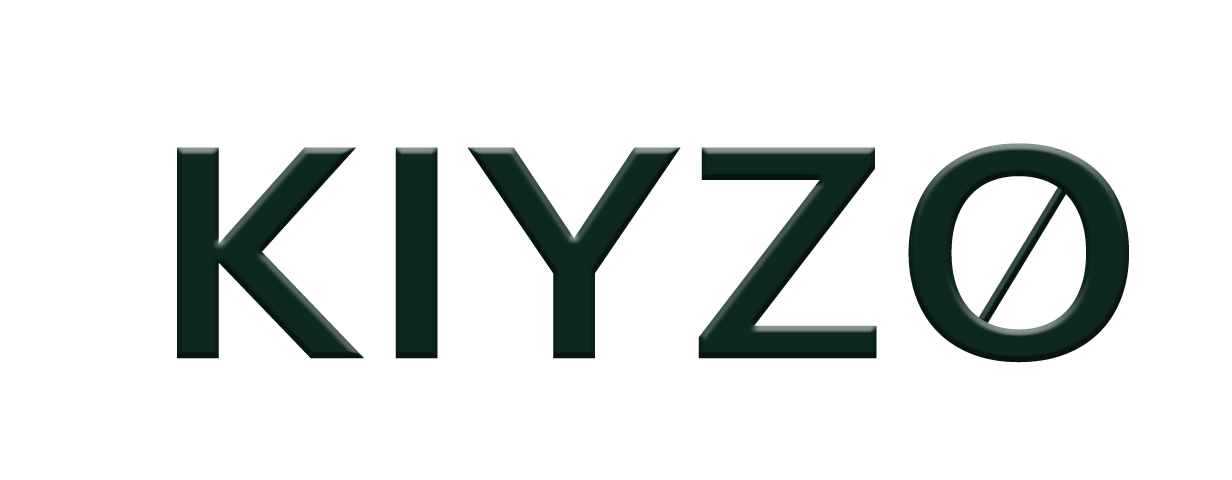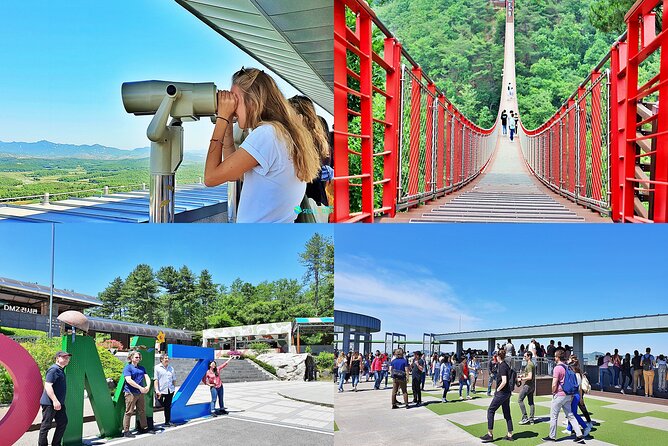Tour the Korean Demilitarized Zone (DMZ) with a knowledgeable guides who shares the history and highlights
- Bring: ID/PASSPORT Dress code is smart casual
See the highlights of the DMZ stress-free on a half-day or full day sightseeing tour from Seoul.
After comfortable transfer from convenient pickup locations, your group will visit
Imjingak Pyeonghwa-Nuri Park
This park was built to console the refugees who left North Korea during the Korean War.
Bridge of Freedom.
You will see the Freedom bridge built to liberate 12,773 prisoners in 1953. The bridge was used by South Koreans returning home from the North. So dive into the cultural and emotional significance of the space by walking in their footsteps decades later! Located against a beautiful natural backdrop, the bridge is a fantastic place for photos, so get inspired and create some memories!
DMZ
Theater – the past in action At the DMZ Theater, you will have an opportunity to watch a short 7-8 minute video about the Korean conflict. The video provides a South Korean perspective on the Korean War, how the DMZ came about, and today’s current situation. It also gives some background to the infiltration tunnels that North Korea dug. Having just had the opportunity to walk through the 3rd Infiltration Tunnel, it should be pretty enlightening. DMZ Exhibition Hall – the best place for history lovers The next point on your DMZ experience is the Exhibition Hall. Here, you will see some key artefacts to give you a better understanding of our bitter history. Containing photos, documents, and some remnants from the past, a walk through the Exhibition Hall will provide you with a deeper and more visual knowledge of the conflict. There are many exhibits on display and some interesting facts for history buffs.
The Third Tunnel
A stop not to be missed on our itinerary is the 3rd Infiltration Tunnel. Located 12 kilometres away from Munsan and 52 from Seoul, the tunnel was discovered in 1978. Its purpose was to be used to invade the south. At 1,635 meters long, 2 meters high and 2 wide, the tunnel has the capacity of moving an entire division per hour! The curious fact here is that when the tunnel was discovered, North Korea alleged that the south had built it for a surprise attack, but evidence points to the contrary. Walking through will feel like you’ve stepped back in time! 1 hour
Dora Observatory
Enjoy clear views at Dorasan Observatory Sitting at the top of Dorasan, the Observatory is ideal for looking across the border. This is the part closest to the North and is one of travelers’ favorite highlights on the tour! So get a once-in-a-lifetime look at isolated North Korea on our Half Day DMZ tour! Use the high powered binoculars on the third floor for extra precision. You will be able to see the North’s propaganda village located right inside the DMZ and see as far as Gaesong, the ninth-largest city in North Korea. If you’re lucky to be here on a clear day, you’ll get to see the bronze statue of Kim Il-sung, too! Dorasan Observatory was recently rebuilt and opened on October 22, 2018. The changes made it both higher and gave it a better angle. Now, you get the added bonus of seeing an uninhibited view of Kijong-dong, Gaesong city, and Gaesong Industrial complex!
Return to Seoul
What Is the DMZ?
The Korean Demilitarized Zone (DMZ) is a strip of land running across the Korean Peninsula that serves as a buffer zone between North Korea and South Korea. The DMZ is a de facto border barrier and divides the Korean Peninsula approximately in half. It roughly follows latitude 38°N (the 38th parallel), the original demarcation line between North Korea and South Korea at the end of World War II. The Demilitarized Zone incorporates territory on both sides of the cease-fire line as it existed at the end of the Korean War (1950-1953), and was created by pulling back the respective forces 1.2 miles along each side of the line.
Upon the creation of the Democratic People’s Republic of Korea (DPRK, also known as North Korea) and the Republic of Korea (ROK, or South Korea) in 1948, the DMZ became a de facto international border and one of the tensest fronts in the Cold War. The DMZ is about 160 miles long and approximately 2.5 miles wide. The truce that ended hostilities was signed here in 1953, but, as an official peace treaty was never agreed to, the two sides have still officially been at war for over sixty years. There are no troops in the DMZ itself, although both sides of the 2.5-mile strip of land separating the Koreas are the most heavily armed in the world.
A Brief History of the DMZ
Even as North Korea and South Korea marched together in a show of political solidarity at the opening ceremony of the 2018 Winter Olympic Games in Pyeongchang, and a newly combined Korean women’s hockey team competed as one nation, there remains one unmistakable reminder of the chasm between the two nations. The DMZ was established in 1953 as part of the Korean Armistice Agreement between the United Nations, North Korea, and China to end the Korean War. In essence, it is a line in the sand that extends the entire 160-mile length of the Korean Peninsula, passing just about 50 miles from the Olympic village in Pyeongchang.
The 38th parallel north was the original boundary between the United States and the Soviet Union’s briefly held administration areas of Korea at the end of World War II. Both the North and South remained dependent on their sponsor states from 1948 to the outbreak of the Korean War. This conflict, which claimed over three million lives and divided the Korean Peninsula along ideological lines, started on June 25th, 1950, with a full-front DPRK invasion across the 38th parallel, and ended in 1953 after international intervention pushed the front of the war back to near the 38th parallel.
The Armistice Agreement for the Restoration of the South Korean State was signed on July 27th, 1953, and resulted in the creation of the DMZ as each side agreed to move their troops 1.2 miles back from the front line, establishing a 2.5-mile wide buffer zone. The Military Demarcation Line (DML) goes through the center of the DMZ and indicates where the front was when the agreement was signed. Owing to this theoretical stalemate and genuine hostility between North and South Korea, large numbers of troops are still stationed along both sides of the buffer zone. Each side holds constant guard against potential aggression from the other side, even 68 years after its establishment. The armistice agreement clearly explains the number of military personnel and what kind of weapons are allowed in the DMZ.
DMZ as a Cultural Site
Borders are usually geopolitical boundaries that mark the legal limits of a nation’s sovereignty, and are often of interest to tourists for the meeting of cultures that occur therein, rather than for their divisive functions. The DMZ acts as a unique cultural site for the two Koreas, and this is seen as an attraction for tourists to the region. They recognize borderlands as symbolic cultural landscapes loaded with iconic sites and attractions that reflect the public memory. This memory is often focused on the past, ongoing wars, or territorial conflicts that have formed the border.
Tourism can act as a force of peace, a mechanism that promotes empathy and supports reconciliation processes between nations. In addition to fostering cultural exchange, research suggests that countries with open and sustainable tourism industries enjoy higher levels of peace, economic prosperity, and resilience. However, the highly regulated movement of Korean nationals on both sides of the DMZ usually limits the peace-building opportunities that are traditionally associated with an exchange of culture. This strict control of the border along with the careful curation of museums and war memorials has allowed each side to write its own version of history.
In the area, there are three small conference buildings administered by the United Nations in the Joint Security Area, all painted the international organization’s signature blue, while North Korea controls three others. On the North side, a building called Panmon Hall looms, while on the South stands Freedom House, which hosts Red Cross and visitor activities. The Freedom House was intended to be a meeting area for separated families from both countries, but the North declined, fearing that its citizens might defect.
The Security Status at the DMZ
The border between North and South Korea is one of the most heavily guarded stretches of land in the world. The DMZ, littered with scores of mines and barbed-wire fences, is nightmarishly difficult to cross, except the Joint Security Area (JSA). JSA is a special buffer zone inside what is known as the “truce village” of Panmunjom, about 35 miles north of Seoul. Every year, hundreds of thousands of people usually visit the JSA for a chance to see North Korean soldiers standing at attention just dozens of feet away and to officially step into North Korean territory inside a United Nations administered conference room that literally straddles the military border.
A visit there feels like a military theater, with the stern warnings from the South Korean soldiers under United Nations (UN) command not to make gestures at their counterparts. Since demarcation, the DMZ has had numerous cases of incidents and incursions by both sides, although the North Korean government typically never acknowledges direct responsibility for any of these incidents. This can be a highly risky place if mutual respect is not maintained from both sides.
Human Rights and Repression in North Korea
North Korea is one of the world’s most repressive states. The government restricts all civil and political liberties for its citizens, including freedom of expression, assembly, association, and religion. It prohibits all organized political opposition, independent media, civil society, and trade unions. The government routinely uses arbitrary arrest and punishment of crimes, torture in custody, forced labor, and executions to maintain fear and control across the country. Besides the DMZ, North Korea is a highly controlled country where human rights are ignored.
The international community has continued to press the North Korean government to expand its engagement with United Nations human rights mechanisms, including action on findings of the UN Commission of Inquiry (COI). The COI report shows that the country has committed crimes against humanity including extermination, murder, enslavement, imprisonment, rape, sexual violence, forced abortion, and other heinous crimes. The citizens of North Korea require a lot of help and support from the international community in order to attain a better life.

